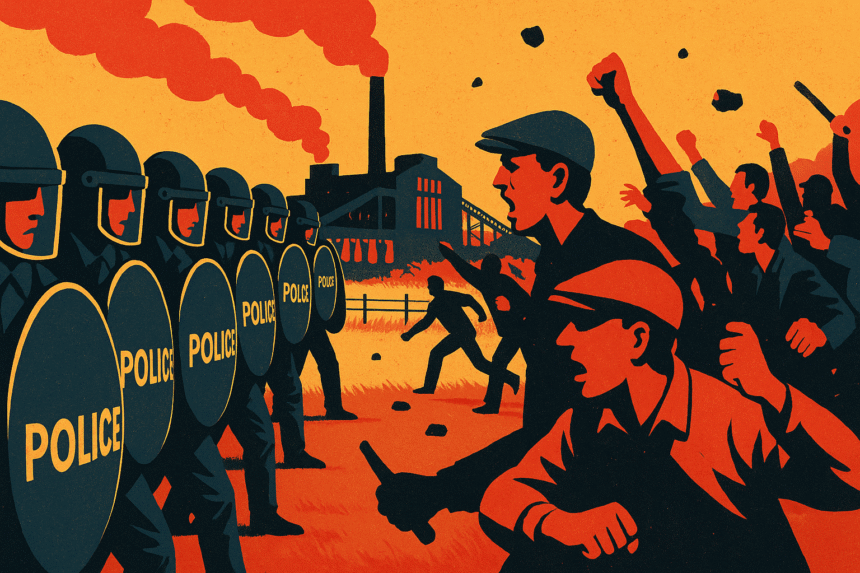More than four decades after the violent confrontation at Orgreave coking plant in South Yorkshire, a government inquiry set to begin this autumn aims to “uncover the truth” behind one of the defining moments of the 1984–85 UK miners’ strike. The event, which left 120 people injured and saw riot charges collapse amid allegations of police evidence fabrication, marked a turning point in the miners’ battle to save Britain’s coal industry — a fight they ultimately lost along with more than 180,000 jobs.
The Build-Up to Orgreave
The clash on June 18, 1984, often referred to as the “Battle of Orgreave,” was the culmination of weeks of smaller confrontations. Striking miners had sought to halt operations at the plant, facing off against police lines as lorries arrived. Violence had flared previously — on May 29, for example, stone-throwing by miners was met with mounted police charges, leaving around 40 injured.
According to eyewitness accounts, including those of journalists on the ground, miners were determined and often confrontational, though not uniformly violent. Arthur Scargill, then-president of the National Union of Mineworkers (NUM), at times urged restraint, warning miners against actions that could harm their own cause.
June 18: Clash and Controversy
When thousands of miners assembled again on June 18, police were better prepared, deploying 6,000 officers — including riot police and, for the first time in Britain, “snatch squads.” Accounts differ sharply on what triggered the violence that day. Some witnesses report miners pushing against police lines and throwing missiles as lorries approached, prompting a forceful police counterattack.
Campaign groups, however, argue that the miners were largely passive, and that police initiated the violence without provocation. They have pointed to controversial BBC footage that was later shown to have been edited in a way that reversed the sequence of events, potentially distorting public perception.
The Police Response
What followed was a series of baton charges and crowd dispersals that escalated into running clashes in Orgreave village. Ninety-five miners faced charges of riot and violent disorder — offences carrying severe penalties — but the cases collapsed amid accusations that South Yorkshire Police had fabricated evidence.
In 2015, the force paid £425,000 in compensation to 39 miners over claims of wrongful arrest, but no full public inquiry was held until now.
A Question of Responsibility
The upcoming inquiry will face a complex challenge: determining whether the violence stemmed from police being provoked after weeks of confrontation, or whether it was the result of deliberate strategic orders from senior officials. While many agree that the police response on June 18 was excessive and brutal, some caution against oversimplifying the narrative by shifting total blame from the miners to the police.
As one former participant put it, the striking miners were “outnumbered, out-armed and outdone.” For Margaret Thatcher’s government, Orgreave achieved its strategic aim: it broke the momentum of the miners’ strike and underscored the state’s resolve.
Lingering Legacy
The events of Orgreave remain a symbol of industrial and political conflict in Britain, emblematic of the deep social divisions of the 1980s. For many former miners and their communities, the sense of betrayal and loss has never faded. Whether the inquiry can provide clarity or closure — or simply reaffirm entrenched views — remains to be seen.








